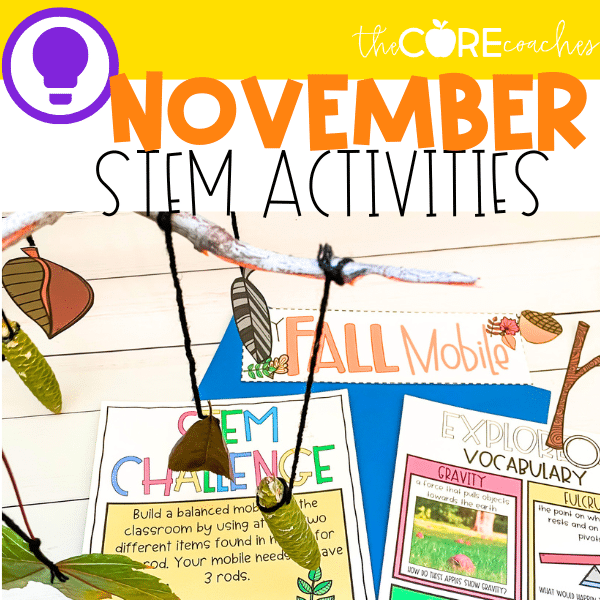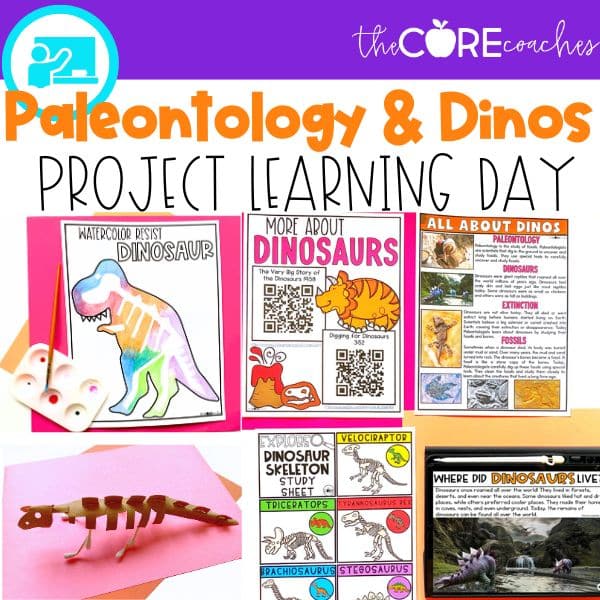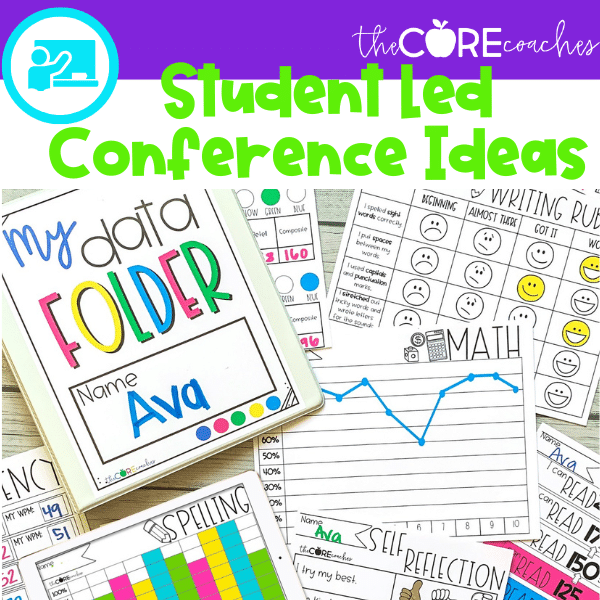Lesson plans, text dependent questions, graphic organizers, writing, and craftivity for each book
Here are the titles and a brief overview of our November K-1 read-alouds:
Bear Says Thanks by Karma Wilson
We can’t seem to resist any Bear books by Karma Wilson. Our students love the repetitive phrases, familiar characters, and lively illustrations by Jane Chapman.
The first day, we will target key ideas and details by having students complete a cut and paste to sequence the “who, what, and what Bear said.” The next day we will dive into the vocabulary. “Bear Says Thanks” is packed full of rich tier II vocabulary words that merit time and attention. We pulled out our favorite vocabulary activity for this lesson. We will revisit pages with the vocabulary words, reread the sentence with the word, then model how to figure out the meaning. We will talk about how to use the text, illustration, or another resource to define it. After defining a couple of words as a class, we will give students the opportunity to try it on their own worksheet. They will gather on the rug with clipboards as we define a few more words.
The third day, we will discuss how Bear’s feelings change throughout the story. We designed a few differentiated graphic organizers to meet our student’s needs for this concept.
The last day, we will make retelling puppets. Kids will weave a construction paper quilt for the setting. We will use our “Bear Says Thanks” puppets in our retelling station during literacy stations.
Thanks for Thanksgiving
by Julie Markes
Thanks for Thanksgiving by Julie Markes is a simple story, but it is perfect for getting young students to reflect on the things they are thankful for. This cute story is written in rhyme, you will fall into a nice rhyme as you read it. The story works so well in November and complements the other stories we read this month.
Thanks for Thanksgiving allows you to hold a deeper discussion about Thanksgiving with your class.
The first lesson in our read-aloud focus’ on things the kids in the story are thankful for. We had our students write things they are thankful. For the second lesson we discussed the point of view of the characters from the story and then we had our students write their own point of view about Thanksgiving. They turned out so cute!
The final lesson we revisited the text for the last time and then had students write a thankful thought. We hung the thankful thoughts on our bulletin boards and accompanied them with a cute craftivity.
A Tree Grows Up by Marfe Ferguson Delano and Little Tree by Loren Long
After reading many different books this month and trying to decide on the perfect texts to use, we came across “A Tree Grows Up” and “Little Tree.” After reading both texts we realized they would work perfectly as a fiction and nonfiction compare/contrast lesson.
The first-day students answer text dependent questions around facts learned in “A Tree Grows Up.” After learning about the changes trees go through during each season, the students will draw and write about the trees in each season. The second lesson will guide students as they answer text dependent questions about “Little Tree.” The students will draw and write how Little Tree’s friends changed through the seasons as well as how Little Tree changed once he was no longer afraid to drop his leaves in the fall.
The third lesson compares the nonfiction text to the fictional story. Students will write (or complete the cut and paste option) to find the similarities and differences in both texts. The lessons end as students complete the fun tree craft which uses shredded paper as leaves.
Owl Babies by Martin Waddell
“Owl Babies” by MartinWaddell” is one of those stories that we can read over and over again. Three baby owls wake up one night to find their mother is missing. At first, they are brave, but as the dark night goes on, they talk themselves into being scared. This is a wonderful book to discuss feelings because the illustrations and dialogue tell so much of the story.
To capture key ideas and details, we will have students sequence the story, then complete a story elements, graphic organizer. Then, we will analyze illustrations and dialogue to dive into how the characters’ feelings change throughout the story. Finally, we will have students relate to the baby owls by writing about something that scares them. Then, they create an owl craft to compliment the writing.
‘Twas the Night Before Thanksgiving by Dav Pilkey
This clever tale by Dav Pilkey puts a holiday spin on the classic poem, ‘Twas the Night Before Christmas. Students will be thrilled as we read about eight children who take a field trip to Farmer Mack Nuggett’s farm in, “‘Twas the Night Before Thanksgiving.”
The first lesson addresses key ideas and details as students retell and sequence the beginning, middle, and end of the story. The second lesson will focus on the text’s craft and structure. By returning to specific pages in the text, we will reread what the text says specifically and then look closely at the illustrations to understand what the author meant. Then we will give students time to quote what the author said and draw what the illustration showed on a graphic organizer. For the third lesson, we will hold a class discussion so students can share their opinions on whether they should save the turkeys like the children did in the story, or whether they should eat the turkeys for Thanksgiving dinner. Then students will have time to write down their opinions and a reason to support their thinking.
Afterward, they will turn their writing page into a cute craft that will help to further demonstrate their opinion. In a fourth lesson, we will target the Integration of Knowledge and Ideas standards. After reading ‘Twas the Night Before Christmas to students, we will use the descriptions and illustrations to compare and contrast St. Nicholas with Farmer Mack Nuggett. Students will record their comparisons by drawing the characters’ similarities and differences on a graphic organizer.
You can purchase each of these read-alouds from our The Core Coaches’ store. Your students will love these read-alouds and you will love meeting so many Reading Literature and Informational Text Core Standards.
We understand that it can be difficult to come up with ideas on how to teach the cores standards during your read aloud time. You don’t have to do it alone! We have made it easy for you to teach these lessons in your classroom. If you’re interested, we’ve created over 45 kindergarten and first grade read-aloud lesson plans. You can buy each read-aloud individually, as a monthly bundle, or save a significant amount of time by buying the entire year-long curriculum.
-The Core Coaches






